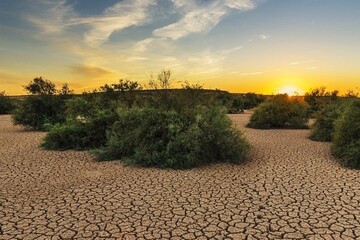Challenge
The occurrence of rainfall-deficit periods (droughts) combined with the imbalances between water resources availability and high exploitation and consumption rates can jeopardize the water and food security of many regions worldwide. This is especially relevant in semiarid and sub-humid regions (over 40% of the world’s population). Risks driven by these phenomena are expected to be intensified due to climate change and scenarios of population growth. Reducing the vulnerability of regional and local economies by guiding more sustainable land-use and irrigation practices, alongside better water allocation strategies is at the cornerstone of the FutureWater’s approach in its attempt to promote a soft transition to more adaptive and resilient economies.
FutureWater approach
- Providing Climate Risk and Vulnerability Assessments based on novel risk-based approaches (e.g. the bottom-up Decision Tree Framework supported by the World Bank) to identify the main drivers of water scarcity and their roles in generating socio-economic and environmental impacts. These analyses are extremely useful for informing on investments and advising on management and adaptation policies, and can be addressed at multiple spatial domains, from the farm and irrigation-district level to river basins and large regions.
- Developing Decision Support Systems which combine operational satellite-based and social-media monitoring tools, forecasting capabilities, hydrological and water allocation modelling, and the latest scientific knowledge on drought processes. FutureWater’s Drought and Water Scarcity DSSs integrate all these components into one toolbox in order to optimize the processing of data in the cloud and subsequently interpret and present results in fast and efficient way that is accessible for the end-user.
Our Solutions

Drought Early Warning
FutureWater implements a multi-layer early warning system for drought that integrates satellite- and ground-based monitoring, hydrological and agro-climatic modelling, seasonal forecasting and risk assessment to deliver actionable insights for stakeholders from farmers to policymakers.

